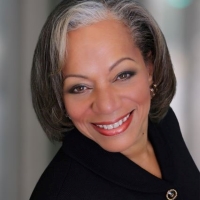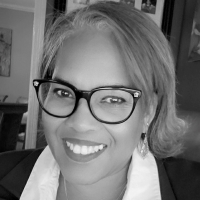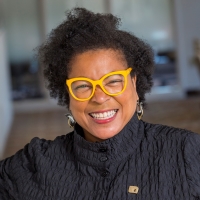
Founder and CEO, Diversity Counts
Former VP, Chief Diversity Officer, Federal Reserve Bank of New York
Diane Ashley dreamed of becoming a diplomat when she was growing up. However, after spending her junior year at The Sorbonne in Paris while attending Yale University, Ashley realized she preferred being based in the U.S. However, the actual experience of connecting people and cultures in a global setting remained an exciting prospect, and that slight pivot in her long-term vision shaped her life’s work toward enhancing diversity, equity and inclusion.
Ashley, who is the founder and CEO of DTA Diversity Counts, was also the first chief diversity officer of the Federal Reserve Bank of New York, holding that position for 12 years before stepping away in 2019 to launch her own advisory firm.
The role of chief diversity officer is not a new one, but it has received increased attention in the last 12 months, particularly as the world continues to wrestle with entrenched systems of racial oppression. As protestors and activists shine light on the inequities in law enforcement and other parts of society, many businesses, particularly those in the financial services sector, have had to take a hard look at their own shortcomings, leading many to enact initiatives to improve. One of the ways some companies have done so is by hiring someone for or promoting someone to the role of chief diversity officer. But what does a chief diversity officer do and what do they need to be effective?

Executive Vice President, Chief Diversity Officer
Cadence Bank
A Diplomatic Mission
Ashley says that the title of chief diversity officer could be renamed chief diplomatic officer due to the position’s role in bringing together people from various backgrounds to create understanding, respect, support and collaboration toward common goals and objectives.
Myra Caldwell, who was named Cadence Bank’s first chief diversity officer last September, certainly relates to the diplomatic aspects of the role, especially from her experience with bank mergers.
“Through M&A, you’re merging cultures, reorganizing departments, and looking at system and process improvements,” Caldwell says. “So those experiences really helped me to become familiar with the process of change management.”
Ashley says anyone in the chief diversity officer role must have a nuanced understanding of how the corporate world works. Taking it a step further, it is also important to have someone who has knowledge and experience of a business’ industry and workplace culture.

Senior Vice President and Chief Inclusion and Diversity Officer
Fifth Third Bank
“You need to become attuned to the best practices as well as the challenges in your particular industry,” Ashley says. “Because the CDO role requires strategy, quantitative analysis, cultural savvy, the ability to move things forward, vision and courage.”
Stephanie Smith was with Fifth Third Bank for 17 years before she became senior vice president and chief inclusion and diversity officer in 2019. During that time, she served in multiple roles across multiple business lines. She says such experiences allowed her to hit the ground running and speak to the unique culture of the business.
“Every corporation has its own culture. Every corporation has its lores and its behaviors,” Smith says. “And the chief diversity officer is the voice for a lot of the communication around those behaviors, and so the chief diversity officer then must understand what the culture is and where it might need to be.”
Once someone has been hired for the role, there is plenty of work to be done. Ashley recommends that any chief diversity officer approach the work concurrently from the top-down and the bottom-up. For Caldwell, who is still in the process of building the DE&I foundation at Cadence Bank, some of her most critical tasks are planning strategy, plotting internal assessments, building a budget and working with the DEI Advisory Council, which is composed of volunteer associates, to identify steps that Cadence can act on immediately to move the bank forward. That’s just the tip of the iceberg, but keeping DE&I at top of mind is perhaps the most critical function of a chief diversity officer.
“My job is to make sure that I’m sharing my story both internally, externally, that we have some goals and metrics and specific structure,” Smith says.
Sharing the story means providing feedback that can sometimes bring harsh realities into the open, according to Ashley, who also emphasizes that an effective chief diversity officer helps leadership assess the efficacy of their current practices and incorporate not just diversity but inclusion and equity into their overall strategic thinking and actions.
Diversity as a Business
Ashley describes financial services as a transaction-oriented industry, which means for DE&I efforts to actually have an effect, DE&I must be treated as part of the business. In fact, as Smith says, “Inclusion and diversity is a business just like any other business.”
“Ours is an industry that has analysts, consultants and objective parties that we rely upon to make sure that we’re headed in the right direction,” Smith says. “And so, as it relates to [DE&I], we need to replicate those same behaviors.”
To ensure DE&I is treated with the same emphasis as other lines of business, there must be active and intentional buy-in from leadership and not just a rubber stamp.
“The CEO has to become a relentless advocate for building a DE&I environment,” Ashley says, adding that she wants to see participation cascade from the board level throughout companies. “He or she needs [to] educate him or herself in inclusive behaviors and then integrate diversity and inclusion with expectations for accountability embedded into performance for everyone.”
But chief diversity officers can’t just be given the support of leadership; they need to be part of leadership. This means having the same level of autonomy and decision-making power as others at the executive level.
“The chief diversity officer must be empowered. If they’re not empowered, they may become a figurehead. And when they become a figurehead, it actually builds tension in the workforce,” Smith says.
It also helps for leadership to be fully committed before a chief diversity officer is brought on, according to Caldwell.
“The benefit of that approach is that the chief diversity officer will have the support and the financial resources available to make the necessary changes,” Caldwell says.
In addition to having a seat at the leadership table, chief diversity officers must be empowered to penetrate the entire enterprise to avoid becoming “the appetite of the day,” according to Smith. That means creating a budget and a full DE&I staff.
Chief diversity officers also must work within the organization to create a solid value proposition, best-in-class practices and a strategic, enterprise-wide focus, Smith says, further recommending looking externally for help.
“You can’t provide solutions and products without engaging the individuals who are at the other end of those solutions and products,” Smith says. “Those individuals are increasingly diverse.”
Plotting the Journey
Ashley describes the work of chief diversity officers and those who support them as a journey, and every organization is likely on a different part of the path. Caldwell is still in the early stages with Cadence Bank, but she already has identified and begun executing the first steps, including improving the collection and understanding of the bank’s workforce data, hiring a director of supplier diversity as well as looking into industry best practices and third-party partnerships.
For Smith, who has been in her role for a bit longer, the focus has been on what she calls Fifth Third’s six bold goals, which began with company-wide unconscious bias training last summer and continues with the creation of an inclusion tool kit, the work of enterprise resource groups, a dedication to increasing supplier diversity spend and more.
While working for the Federal Reserve Bank of New York, among her numerous initiatives, Ashley launched the bank’s office of diversity and inclusion and its more than 10 employee networks.
“I am a huge advocate of employee networks,” Ashley says. “If you task these groups and set them up with guardrails and charters that help create structure and purpose, you really can develop a body of individuals who will help to improve your organization.”
Ashley’s work is now focused on helping other organizations improve their DE&I efforts and outcomes. For example, in 2020, the Bank Administration Institute invited her to facilitate the launch of a monthly roundtable series for chief diversity officers in commercial banks across the United States.
“We’ve built a great sense of community, sharing of best practices and collegiality through these roundtables,” Ashley says.
Collaboration, Not Competition
Ashley saw progress on the DE&I front at the Federal Reserve Bank of New York during her tenure, especially as the Dodd-Frank Wall Street Reform and Consumer Protection Act required greater focus in some areas on diversity and inclusion for both workforces and minority and women-owned businesses and communities. To measure progress, Ashley says quantitative metrics are important, but qualitative measures can be just as vital and, sometimes, easier to identify.
“A key indicator that we were starting to have impact and success was when the chief diversity officer was no longer the only person supporting [DE&I],” Ashley says. “It was encouraging to see senior management take an active role [in] the DE&I efforts, ranging from mentoring, sponsorships or participation with employee resource groups.”
According to Smith, DE&I will play into the survivability of some businesses as the workforce shifts between generations, with millennials and those from Gen Z increasingly weighing social impact when they choose where to work.
“[If] we want to attract, retain [and] recruit talent, then we’re going to have to care about their perspective as a social enterprise,” Smith says.
Caldwell agrees and also says the financial services industry has the potential to not only help build a more equitable financial ecosystem but push toward an anti-racist society.
“We can’t let up again,” Caldwell says. “We must follow through on our commitments and our promises. That’s crucial. I think by delivering some of the things I talked about earlier, it’ll ignite energy.”
Maintaining that energy through the economic uncertainty created by the COVID-19 pandemic can be difficult, but it’s important to keep pushing forward. Ashley began at the Federal Reserve Bank of New York a year before the Great Recession, but she did not let the organization lose sight of the importance of DE&I due to the economic fallout.
“At the end of the day, everyone expects you to do this because you’ve made a commitment to do this, but it is in times of crisis that people are watching to see if the commitment will continue,” Ashley says, noting that the issues of 2020 highlight that race and privilege must continue to be part of the DE&I discussion. “We’ve got to put it out, deal with it, correct it and then move forward.”
Regardless of the economic climate, chief diversity officers will play a major role in promoting progress on the DE&I front, no matter how gradual it may be.
“Inclusion and diversity is the one space in the financial services sector where we don’t believe there is competition; there is only collaboration because we all could get better at this,” Smith says. “And there is no off-the-shelf solution for inclusion and diversity or a cure for systemic and structural racism. It is something that we are focused on and we’re working together to solve.” •
Ellie Delaney is a freelance writer based in Philadelphia. Phil Neuffer is managing editor of ABF Journal.
